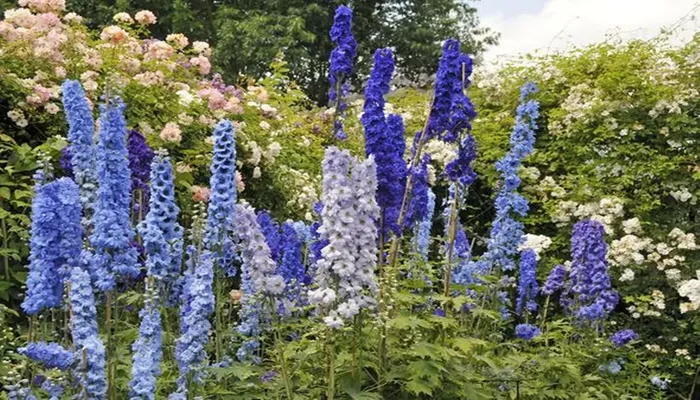A gardening expert has highlighted five plants that can be pruned now to encourage a second bloom in late summer and early autumn. By properly managing certain perennial plants, gardeners can stimulate new growth and enjoy another round of flowers.
Maryam Ghani, brand manager at Haute Florist, explained that trimming some plants after their first flowering can lead to fresh blooms later in the season. “Cutting back perennials is like giving them a mini rejuvenation,” she said. “After their initial bloom, plants can become leggy and tired. By trimming them down, you remove spent flowers and encourage the plant to focus its energy on producing new growth and, ultimately, more blooms.”
However, not all plants respond to pruning with a second flush of flowers.
According to Ghani, geraniums, delphiniums, lupins, salvia, and bellflowers are the best candidates for producing a second set of blooms after being trimmed. Geraniums, in particular, are reliable for a second bloom, often flowering into early autumn if pruned hard after their first bloom. Delphiniums may also produce additional flowers, although these might be smaller than those that appear earlier in the season. Lupins will bloom again in late summer, but pruning them after flowering is key to preventing seed formation. Many varieties of salvia, especially those that bloom in summer, are known to produce more flowers later in the season, while bellflowers also have the potential to yield additional blooms after being pruned.
To successfully prune perennials for a second bloom, timing is essential. “The best time to cut back perennials is right after they finish their first bloom,” advised Ghani. She warned against waiting too long, as the plant may begin to set seed, which could reduce its energy for producing new flowers.
When pruning, it’s important to cut back by about two-thirds of the plant’s height, leaving just two to three inches of stem above the base. This method encourages new growth while maintaining enough foliage for photosynthesis.
After pruning, feeding and watering the plants is crucial. “A little extra nutrition and moisture can go a long way in helping plants recover and produce new blooms,” Ghani noted.
For perennials that don’t require a full cut-back, regular deadheading can promote more blooming. “By removing spent flowers regularly, you prevent seed formation and encourage the plant to keep flowering,” she explained.
Lastly, mulching around the base of perennials helps retain moisture and keeps the plant’s roots cool, which is especially important during hot weather. “Mulch not only helps with moisture retention but also protects the roots as they put energy into new growth,” Ghani concluded.


